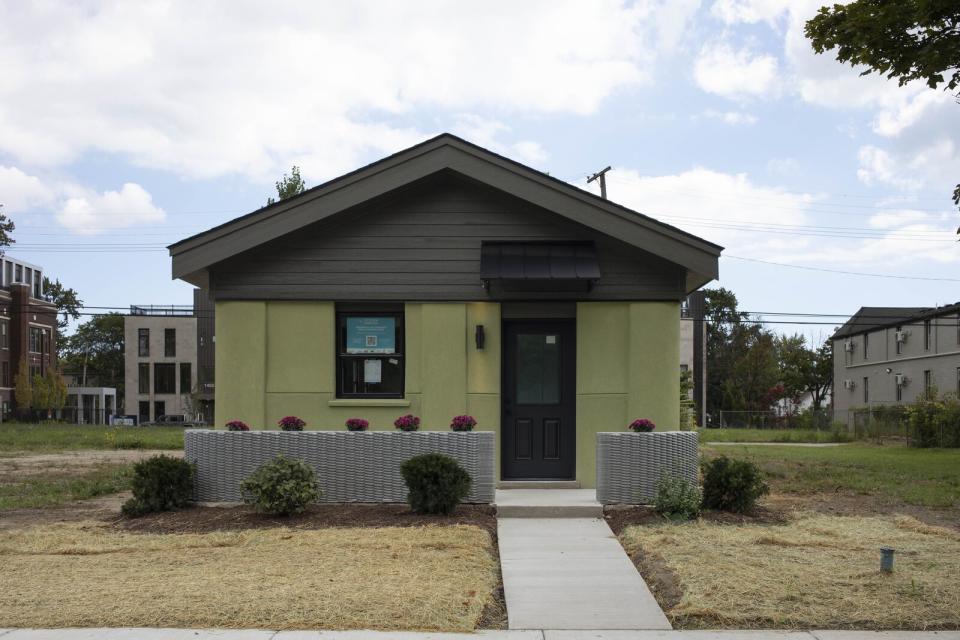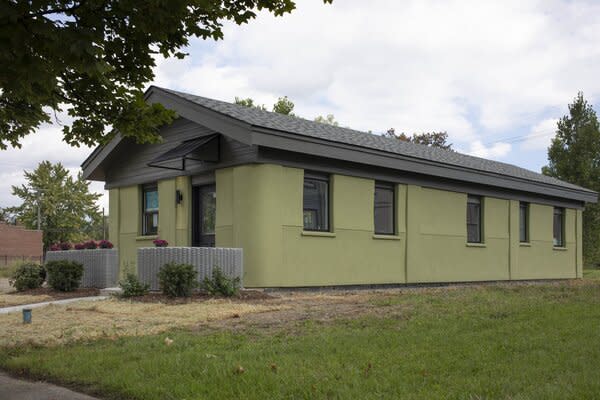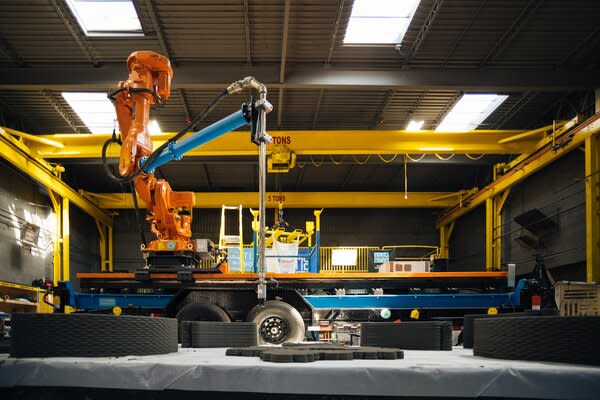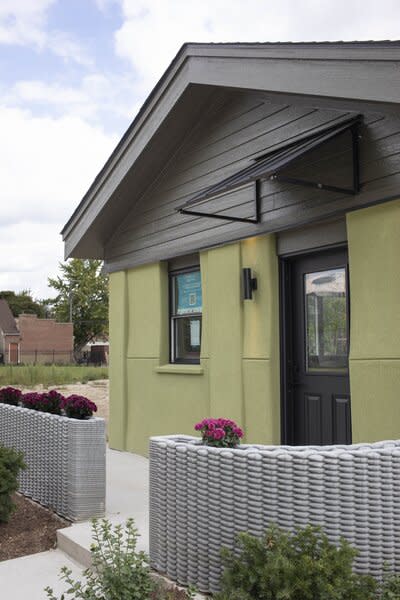Detroit’s First 3D-Printed Home Was Made by a Robot That Used to Build Cars
Citizen Robotics adapted the tech to print a two-bedroom cottage that serves as a concept for affordable housing in the city.

Detroit has roughly 72,000 vacant lots according to the city’s Land Bank Authority, and some neighborhoods only have a few houses per block. Between them are wide open spaces, many of which have become meadows after a swath of landowners sold their property to the land bank and headed for the suburbs when times got tough during the deindustrialization of the automotive industry and when Detroit declared bankruptcy in 2013.
Now, local architect Bryan Cook, principal of Develop Architecture, and nonprofit Citizen Robotics have teamed up on a concept that could help fill those empty parcels with affordable housing.
At this year’s Detroit Month of Design, they unveiled Motor City’s first 3D-print home, a 1,000-square-foot, two-bedroom cottage in the Islandview area. It features stucco panels for siding, a pitched roof framed with wood, and a front porch in typical Detroit residential vernacular. "The concept for the design was that it should be of the neighborhood," explains Cook.
Citizen Robotics, founded by father-daughter duo Evelyn and Tom Woodman, used a robot they purchased from an automotive factory in Chicago to print the home’s walls, which are reinforced with a mass-timber frame that ensures the building’s structural integrity. Once the walls are tested for their load-bearing capacity, the frame can be removed in a future design iteration, says Cook. The lightweight roof is made of foam panels and engineered wood, chosen for its sustainability and thermal performance.
"Citizen Robotics’ mission is to try to disrupt [the homebuilding] industry," says Cook. "They want to become a potential replacement for traditional stick-built construction," he continues, adding that something aesthetically out-of-the-box didn’t feel like the right way to introduce this new technology. Other 3D-print houses feature domed roofs and no right angles, like Mario Cucinella Architects and WASP’s clay habitats or Icon’s curved-wall dwellings in Austin.
The home’s structure was printed in five days at Citizen’s Southwest Detroit facility, and it took a day and a half to finish the home on site, a far speedier process than conventional methods. By comparison, the cost to build was slightly higher, says Tom, adding that they plan to continue developing the idea with the goal of matching or beating out the price of stick-built homes per square foot. Not only are they aiming for the up-front construction costs to be lower, says Tom, but also to improve the design’s thermal efficiency to keep heating and cooling bills low.
See the full story on Dwell.com: Detroit’s First 3D-Printed Home Was Made by a Robot That Used to Build Cars
Related stories:




